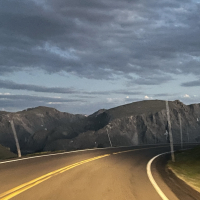Welcome to the EGGhead Forum - a great place to visit and packed with tips and EGGspert advice! You can also join the conversation and get more information and amazing kamado recipes by following Big Green Egg to Experience our World of Flavor™ at:
Want to see how the EGG is made? Click to Watch
Facebook | Twitter | Instagram | Pinterest | Youtube | Vimeo
Share your photos by tagging us and using the hashtag #BigGreenEgg.
Share your photos by tagging us and using the hashtag #BigGreenEgg.
Want to see how the EGG is made? Click to Watch
Table nest

newegger169
Posts: 146
is the table nest on top the stone not needed? Too much egg stickin out of table?
 t on top the stone not needed? Too tall?
t on top the stone not needed? Too tall?

 t on top the stone not needed? Too tall?
t on top the stone not needed? Too tall? Comments
-
Having an air gap between the bottom of the egg and the table is a good idea. A stone is an added safety measure. Unfortunately the egg is sitting high with that table design. Can the shelf be lowered without too much work? Good luck.
-
No I would jus take paver out to lower the egg
-
You can do that, but keep an eye on the wood underneath. @cazzy has some custom nests, but his table is discoloration underneath, or you could put something thinner like aluminum or sheet metal to protect against sparks/embers in case of a crack.
-
I would not put the nest directly on the wood. Over time the heat will cause the wood to darken. If you have too much egg sticking up and still want to protect your wood you can do what I did.
I put my nest on top of a piece of 3/6" steel plate.
 Louisville, GA - 2 Large BGE's
Louisville, GA - 2 Large BGE's -
If you're worried about the height of the paver and still want some protection between the table nest and table you can you a square tile. I use a tile piece when setting the small or mini on a table"The pig is an amazing animal. You feed a pig an apple and it makes bacon. Let's see Michael Phelps do that" - Jim Gaffigan
Minnesota -
You could recess the stone in the shelf. It would be a little bit of work but easier than moving the shelf height.
-
Is anything needed under paver?
-
From the photo it looks like if you drop the egg much at all you might have trouble with the clearance in the holeArlington, TX 1 large, 1 medium, 1 Mini Max, and a 22" Blackstone
-
I think the company line is "no," but should you develop a crack and a ember falls on the table during a low and slow whilst you are nice and cozy in your bed, do you want your table to burn to the ground?newegger169 said:Is anything needed under paver?
i can stick my hand under my egg at nuclear temps, but no way am I exposing the wood underneath. Just not worth the risk. Search for house or table fires on the forum and decide for yourself. -
100% agree with thisProser said:From the photo it looks like if you drop the egg much at all you might have trouble with the clearance in the holeLBGE& SBGE———————————————•———————– Pennsylvania / poconos -
I have my nest on the table with no paver. I can hold my hand between the table and egg at 650F with no issues.
-
I will say it again, I have seen this again and again, the pavers and the steel plates are a detriment, not an asset. They do not allow the heat to dissipate. Furthermore, you cannot do a visual check on the condition because it is covered by the stone or plate. I believe these items conduct the heat rather than shield it. Not a scientist, but I have seen it first hand. I would not have one.
-
You may have an argument for carbon steel with a conductivity of 54 w/(m K) but concrete ranges from .1-1.8 light to dense respectively.pgprescott said:I will say it again, I have seen this again and again, the pavers and the steel plates are a detriment, not an asset. They do not allow the heat to dissipate. Furthermore, you cannot do a visual check on the condition because it is covered by the stone or plate. I believe these items conduct the heat rather than shield it. Not a scientist, but I have seen it first hand. I would not have one. -
Damn. I hope I haven't screwed up.theyolksonyou said:
You may have an argument for carbon steel with a conductivity of 54 w/(m K) but concrete ranges from .1-1.8 light to dense respectively.pgprescott said:I will say it again, I have seen this again and again, the pavers and the steel plates are a detriment, not an asset. They do not allow the heat to dissipate. Furthermore, you cannot do a visual check on the condition because it is covered by the stone or plate. I believe these items conduct the heat rather than shield it. Not a scientist, but I have seen it first hand. I would not have one. Louisville, GA - 2 Large BGE's
Louisville, GA - 2 Large BGE's -
@johnkitchens I wouldn't sweat it. I can comfortably put my hand under my egg. Bring home an IR thermo and measure if it makes you more comfortable. I'm more worried about embers.
For or reference aluminum is 205 W/(m K) and copper is 401 -
@johnkitchens also, air is .024. That's where the real protection lies.
-
I will probably leave it as is. I seldom go over 600 degrees and when I do it is very brief.
 Louisville, GA - 2 Large BGE's
Louisville, GA - 2 Large BGE's -
Has anyone here measured the egg bottom temp with an infrared temp gun or even an old school thermometer ? The ash collection chamber is an air space , which insulates from the firebox. The nest gives you an extra air space, hence extra insulation. If you don't have the nest, then I think it matters more to have a paver or tile to insulate, but @johnkitchens table is great because the metal plates protect the table against embers and hot drafts. @newegger169 since you have the nest you can change the paver to a thinner tile or steel plate IMO if you really want the egg lower.
-
-
So, I invite @Ozzie_Isaac or @Jeepster47 to jump in as I haven't been a practicing engineer in nearly 20 years, but by my math assuming a 3/16" metal plate and a static column of air (not real) of 18" square, your heat transfer at assumed egg bottom of 400F and ambient temp of 80F your heat transfer is .2 BTU/S @johnkitchens don't sweat it.
-
@theyolksonyou you are correct for conductive heat transfer, but you have to account for the convective and radiative heat transfer too.
Both decrease rapidly as your distance increases.
I would rather light a candle than curse your darkness.
-
My plate size is 22" if it matters. (I am sure it doesn't). I am no where near an engineer so I am no help at all. I am going to bring home an infrared thermometer the next time I cook and measure underneath.
Jason I thought that you were a practicing engineer? Louisville, GA - 2 Large BGE's
Louisville, GA - 2 Large BGE's -
The charcoal burns @1300 I think. The charcoal can fall below the fire grate and burn right on the bottom and regularly does. I don't know the answer, but just saying.theyolksonyou said:So, I invite @Ozzie_Isaac or @Jeepster47 to jump in as I haven't been a practicing engineer in nearly 20 years, but by my math assuming a 3/16" metal plate and a static column of air (not real) of 18" square, your heat transfer at assumed egg bottom of 400F and ambient temp of 80F your heat transfer is .2 BTU/S @johnkitchens don't sweat it. -
This thread is making me smarter...LBGE& SBGE———————————————•———————– Pennsylvania / poconos
-
Absolutely
-
@theyolksonyou if you can still perform convection heat transfer calculations that might qualify you as still "practicing" lol. Nicely done !
@johnkitchens your welcome, that's a beautiful looking dual table. -
Ok, either way, take the difference of the surface of the egg and the surface of the table and divide by 1538 and you have the conductive heat transfer. I'm not going to dig into radiant heat and convective heat because a. I'm lazy and 2. I know from experience I can touch the paver under my eggpgprescott said:
The charcoal burns @1300 I think. The charcoal can fall below the fire grate and burn right on the bottom and regularly does. I don't know the answer, but just saying.theyolksonyou said:So, I invite @Ozzie_Isaac or @Jeepster47 to jump in as I haven't been a practicing engineer in nearly 20 years, but by my math assuming a 3/16" metal plate and a static column of air (not real) of 18" square, your heat transfer at assumed egg bottom of 400F and ambient temp of 80F your heat transfer is .2 BTU/S @johnkitchens don't sweat it. -
Why risk it? Get a granite tile - 1/2" - and replace your paver. That should buy you, what, maybe a gain of almost 2" from the paver? A black granite tile, with the edges rounded and polished would be a nice look anyway. You can probably buy the tile from HD, and then look around for a place that dresses tile. Probably cost you another 10 bucks to round and polish the edges.
Good luck.Phoenix -
I will look into this in a bit. Helping kiddos with math and spelling.
How thick is the base of the egg and how high is the table nest?I would rather light a candle than curse your darkness.
-
@chowman if I did the research, I could do the math the inter web is a beautiful tool. Thanks for the compliment
Categories
- All Categories
- 184K EggHead Forum
- 16.1K Forum List
- 461 EGGtoberfest
- 1.9K Forum Feedback
- 10.5K Off Topic
- 2.4K EGG Table Forum
- 1 Rules & Disclaimer
- 9.2K Cookbook
- 15 Valentines Day
- 118 Holiday Recipes
- 348 Appetizers
- 521 Baking
- 2.5K Beef
- 90 Desserts
- 167 Lamb
- 2.4K Pork
- 1.5K Poultry
- 33 Salads and Dressings
- 322 Sauces, Rubs, Marinades
- 548 Seafood
- 175 Sides
- 122 Soups, Stews, Chilis
- 40 Vegetarian
- 103 Vegetables
- 315 Health
- 293 Weight Loss Forum









